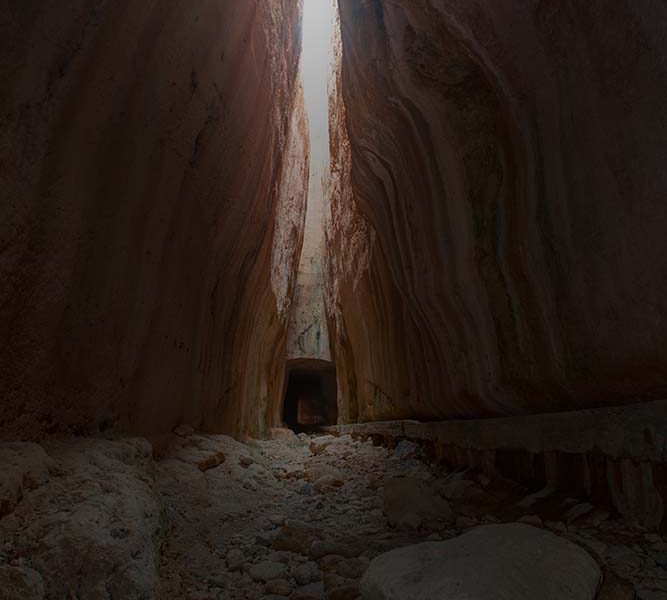Hatay, a region often described as a cultural mosaic, has been home to many civilizations and diverse cultures over millennia. Known for its tolerance, multicultural fabric, and religious harmony, Hatay continues to captivate history lovers and travelers alike. One of its most impressive historical landmarks is the Titus Tunnel, located in the Samandağ district. This ancient Roman structure is not only an architectural wonder but also holds the title of the largest tunnel created by human hands.
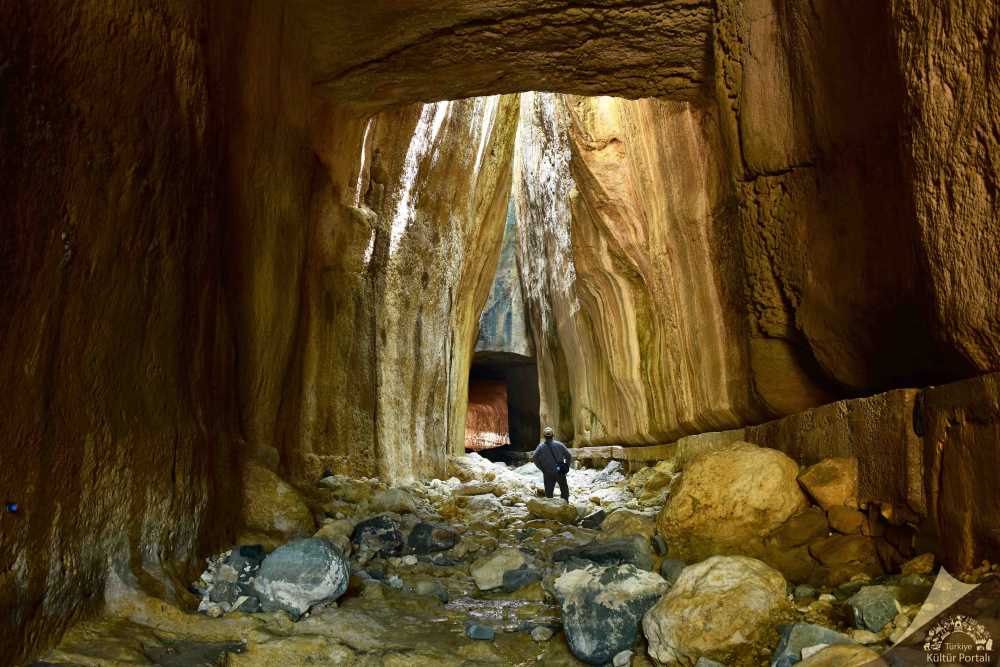
The Story Behind the Construction of the Tunnel
The construction of the Titus Tunnel, also referred to as the Titus Rock Tunnel, dates back to the 1st century AD during the reign of Roman Emperor Vespasian. At that time, the ancient city of Seleucia Pieria, now part of Samandağ, was a vital port. However, it faced a major threat: floodwaters and debris from nearby mountains frequently clogged the port and disrupted trade.
To combat this, Emperor Vespasian ordered the construction of a massive tunnel system to divert mountain waters and protect the harbor. Construction began around AD 61, and the project was completed during the reign of his successor, Emperor Titus. Thousands of Roman legionnaires and slaves carved through solid rock using only hammers and chisels, no machinery. The result: a 1,380-meter-long, 7-meter-high, and 6-meter-wide tunnel carved entirely by hand.
Modern-day architects and archaeologists confirm that the tunnel was highly effective in its function, representing an unparalleled engineering success for its time.
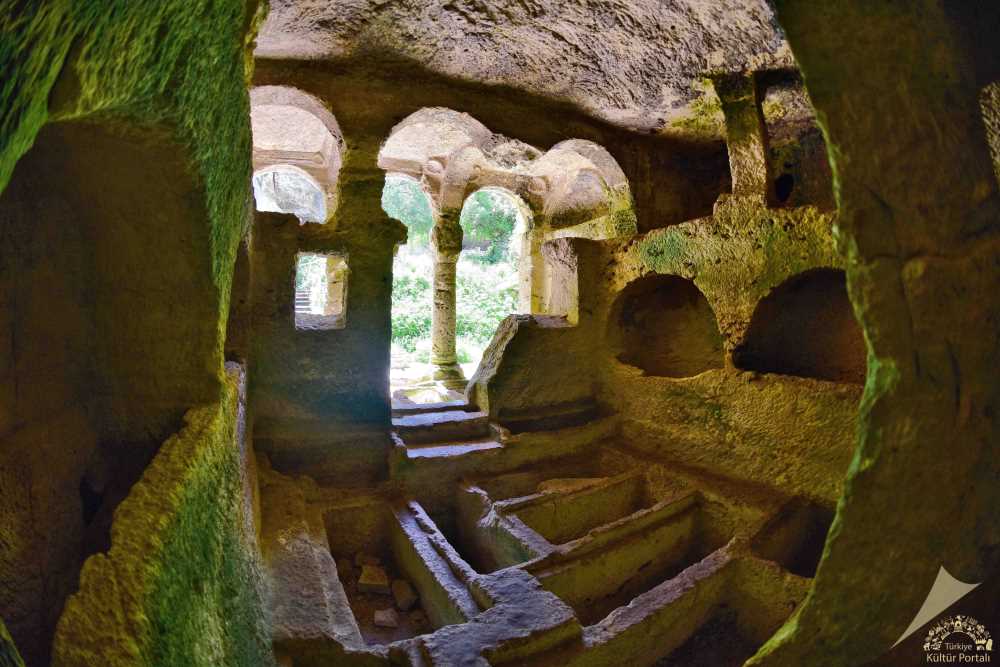
Architectural Features of the Titus Tunnel
Divided into three main sections, the Titus Tunnel continues to awe visitors with its scale and ingenuity:
- Diversion Dam: Built between the hill and slope, this structure redirects water toward the tunnel entrance.
- Main Tunnel Sections: A complex series of tunnels carved directly into natural rock.
- Canal Section: A 630-meter-long extension that includes numerous rock tombs, arched chambers, and water distribution networks.
These structural elements showcase the Romans’ exceptional understanding of hydraulics and engineering.
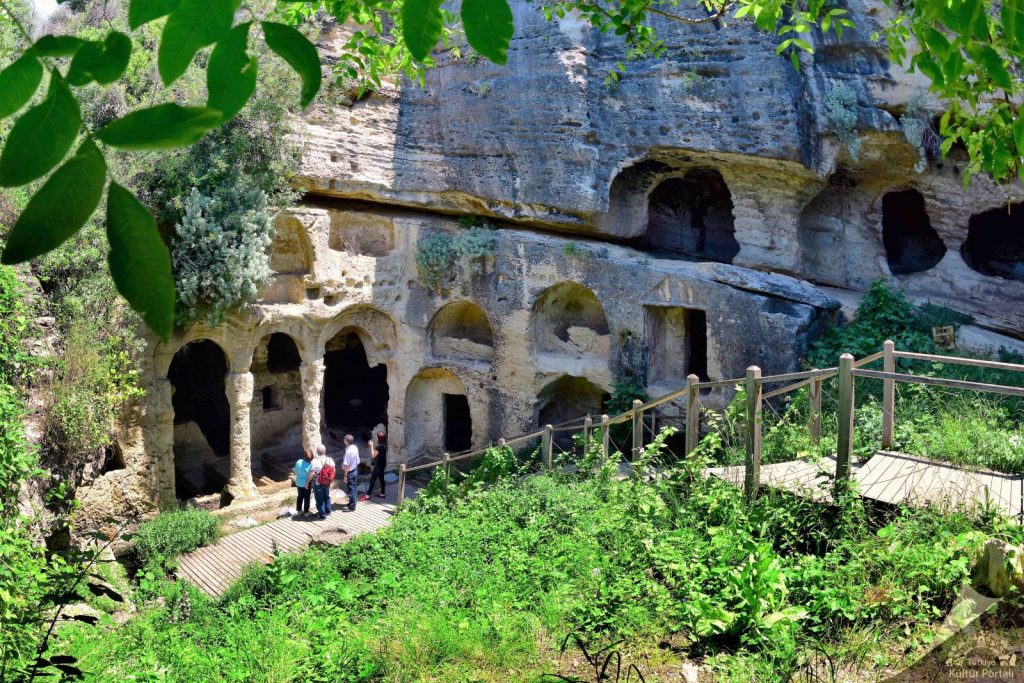
Cradle Cave: The Heart of Roman Rock Tombs
Located about 100 meters inside the Titus Tunnel, the Cradle Cave (locally known as Beşikli Mağara) is one of the most architecturally significant features of the site. This cave houses Roman-era tombs that belonged to nobles and prominent families of the period.
Decorated with arched corridors and burial chambers carved into the rock, the Cradle Cave is one of the finest examples of Roman rock tomb architecture found in Anatolia. The tombs offer a glimpse into Roman burial practices and the prominence of the city’s elite.
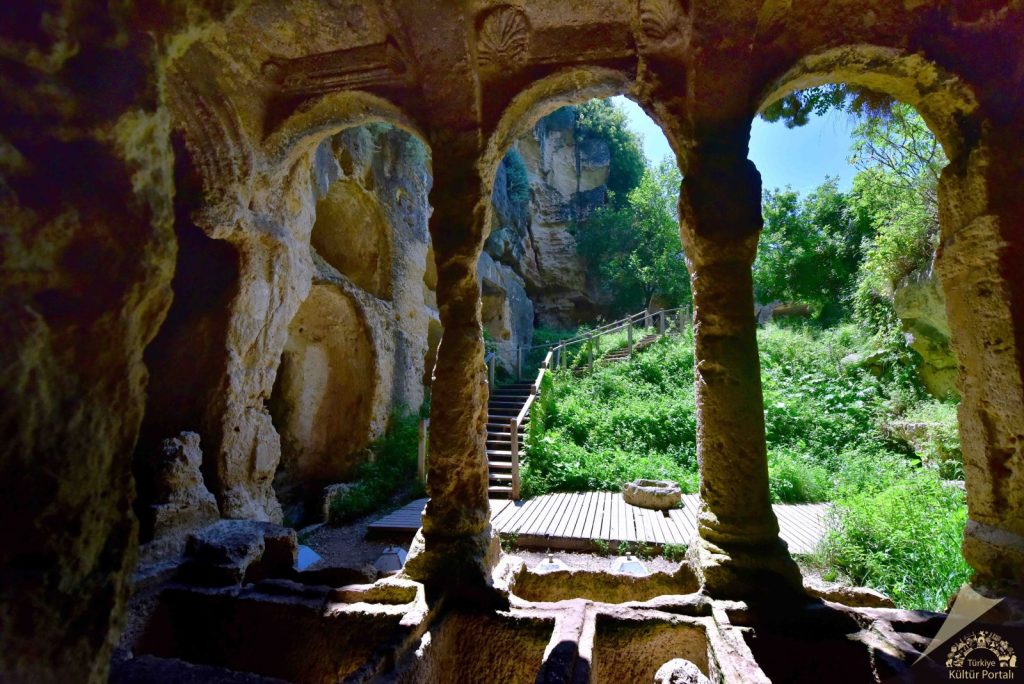
How to Visit the Titus Tunnel and Cradle Cave
Thanks to preservation efforts by the Turkish Ministry of Culture and Tourism, around 900 meters of the Titus Tunnel are now open to visitors. A well-marked walking trail, complete with wooden and stone bridges, guides visitors through this monumental tunnel system and the Cradle Cave.
The tunnel is located in Samandağ, approximately 25 kilometers from Antakya, Hatay’s city center. You can reach the site by:
- Public transportation (minibuses or buses from Antakya),
- Or private car, with an average travel time of 30 minutes.
Why Visit the Titus Tunnel?
Whether you’re a history enthusiast, an architecture lover, or simply a curious traveler, the Titus Tunnel and Cradle Cave offer a unique opportunity to walk through one of the greatest surviving feats of ancient Roman engineering. It’s not just a tunnel; it’s a testament to human ingenuity, a bridge between civilizations, and a highlight of Hatay’s rich cultural heritage.

